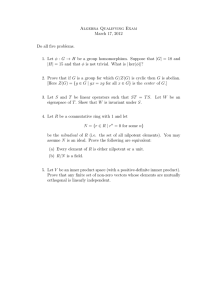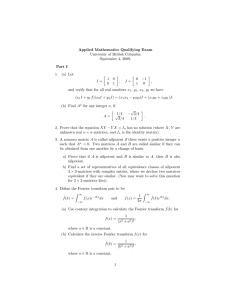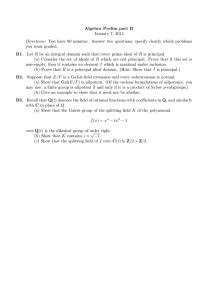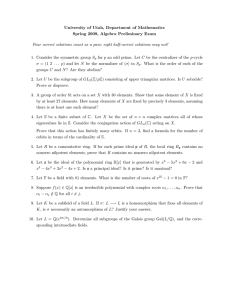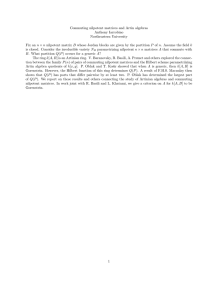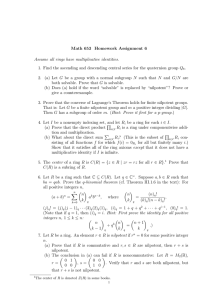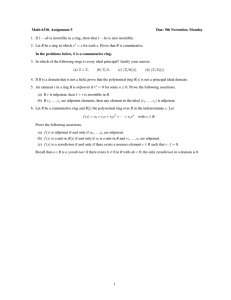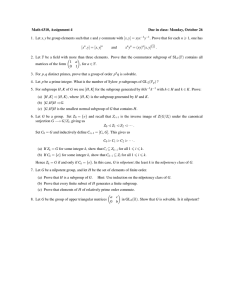Pure Mathematics Qualifying Exam University of British Columbia September 4, 2009. Part I
advertisement
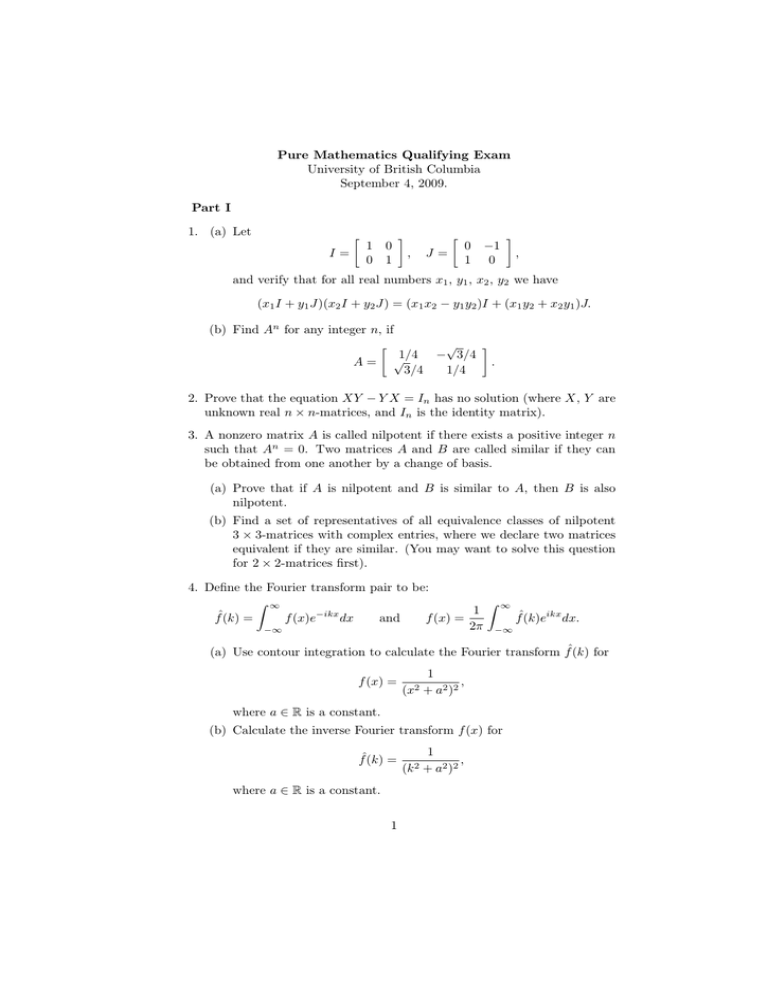
Pure Mathematics Qualifying Exam
University of British Columbia
September 4, 2009.
Part I
1. (a) Let
I=
1
0
0
1
,
J=
0
1
−1
0
,
and verify that for all real numbers x1 , y1 , x2 , y2 we have
(x1 I + y1 J)(x2 I + y2 J) = (x1 x2 − y1 y2 )I + (x1 y2 + x2 y1 )J.
(b) Find An for any integer n, if
1/4
A= √
3/4
√
− 3/4
.
1/4
2. Prove that the equation XY − Y X = In has no solution (where X, Y are
unknown real n × n-matrices, and In is the identity matrix).
3. A nonzero matrix A is called nilpotent if there exists a positive integer n
such that An = 0. Two matrices A and B are called similar if they can
be obtained from one another by a change of basis.
(a) Prove that if A is nilpotent and B is similar to A, then B is also
nilpotent.
(b) Find a set of representatives of all equivalence classes of nilpotent
3 × 3-matrices with complex entries, where we declare two matrices
equivalent if they are similar. (You may want to solve this question
for 2 × 2-matrices first).
4. Define the Fourier transform pair to be:
Z ∞
Z ∞
1
fˆ(k)eikx dx.
fˆ(k) =
f (x)e−ikx dx
and
f (x) =
2π −∞
−∞
(a) Use contour integration to calculate the Fourier transform fˆ(k) for
f (x) =
1
,
(x2 + a2 )2
where a ∈ R is a constant.
(b) Calculate the inverse Fourier transform f (x) for
fˆ(k) =
where a ∈ R is a constant.
1
1
,
(k 2 + a2 )2
5. Use a keyhole-shaped contour to evaluate the integral.
Z ∞
dx
√
I=
x(x2 + 1)
0
6. Let D be the circle of radius 4 centred at the point (0, 5) in the x − y
plane. Find a function φ(x, y) that satisfies the following restrictions:
• φ is harmonic in the upper half-plane exterior to D;
• φ = 1 on D;
• φ = 0 on the x-axis.
Hint: Consider a conformal map of the form w =
2
z+α
z+β .
Part II
1. Suppose f is a continuous function on R such that |f (x) − f (y)| ≥ |x − y|
for all x and y. Show that the range of f is all of R.
2. For every a ∈ R, determine whether the integral
ZZ
(x4 + y 2 )a dA
D
is finite, where D is the square {(x, y) | −1 ≤ x ≤ 1, −1 ≤ y ≤ 1}.
3. Let f : R → R be a twice continuously differentiable function and assume
that f has a local minimum at 0. Prove that there is a disc centered on
the y-axis which lies above the graph of f and touches the graph of f at
(0, f (0)).
4. (a) What is the smallest integer n such that there exists a non-abelian
group of order n?
(b) Give an example of a number n > 1000 and not a prime, such that
there exists only one group of order n up to isomorphism. How many
subgroups does the group in your example have?
5. Let E be the splitting field of the polynomial (x2 − 3)(x2 − 5) over Q.
(a) Find the degree [E : Q].
(b) Find an element α ∈ E such that E = Q(α).
(c) Find the Galois group Gal(E/Q).
6. Let I = {f ∈ C[x, y] | f (1, 1) = 0}. Prove that I is a maximal ideal in the
ring C[x, y].
Find a minimal set of generators for I.
3
